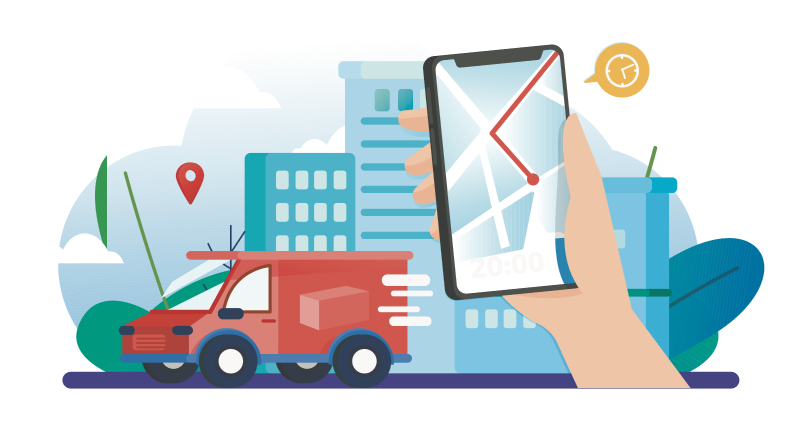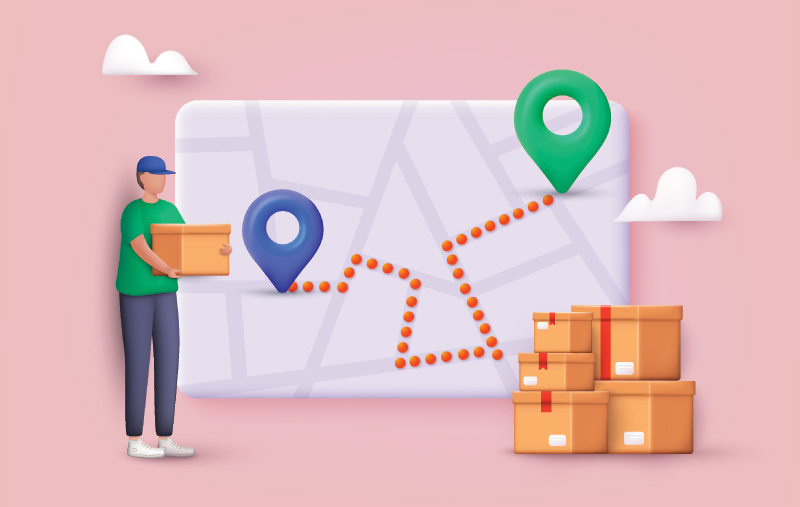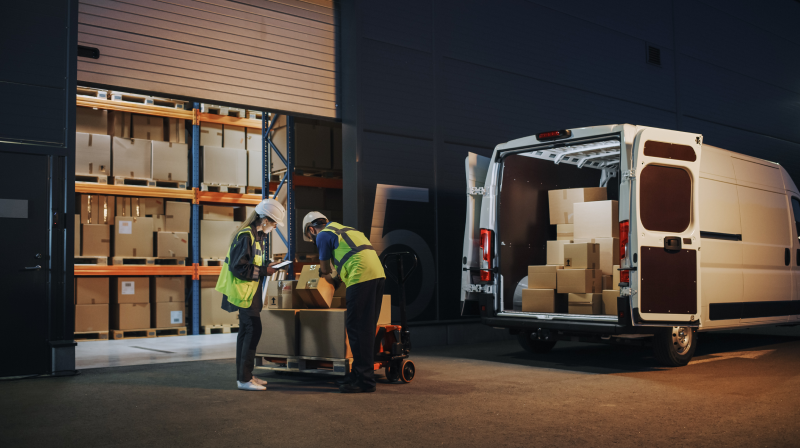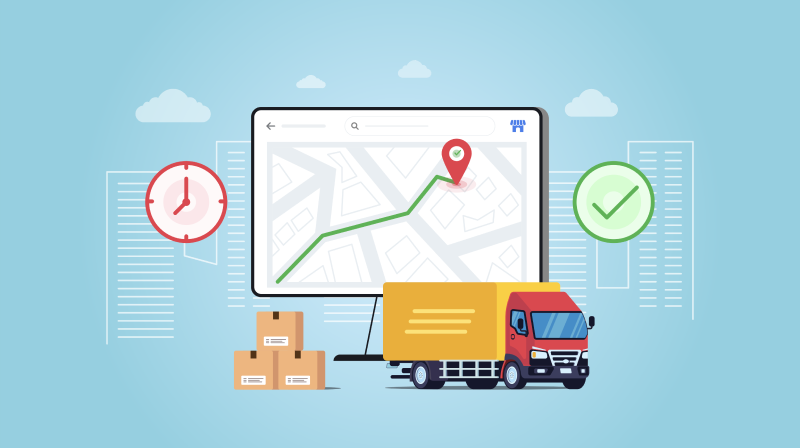Blog
Drive 100% On-Time Deliveries with the Power of Last Mile TMS Solutions

In today’s e-commerce and logistics environment, customers anticipate timely, accurate, and most significantly, quick deliveries. Delays may result in unhappy customers, bad press, and even a loss of sales.
Delivering packages on time is hard but crucial for logistics companies. They must meet these high standards. This is where Last Mile TMS (Transportation Management System) come into play. By streamlining delivery operations, optimizing routes, and enhancing real-time visibility, Last Mile TMS software empowers businesses to meet delivery deadlines consistently and efficiently.
Top 10 Last Mile Delivery Challenges
The last mile of delivery is often the most complex and costly part of the logistics process. Several challenges hinder on-time deliveries, including:
1. High Delivery Costs
The last mile usually makes up more than 50% of total delivery costs. This is because it requires a lot of labor and resources. Factors like fuel prices, vehicle maintenance, and inefficient route planning contribute to these high costs.
2. Inefficient Route Planning
Without optimized routing, delivery vehicles often take suboptimal paths, leading to increased fuel consumption, delays, and missed delivery windows. This inefficiency impacts overall customer satisfaction.
3. Delivery Delays
Urban congestion, weather conditions, and unpredictable traffic patterns can cause delivery delays. Meeting the rising expectations of same-day or next-day delivery becomes challenging under these conditions.
4. Lack of Real-Time Visibility
Customers and businesses demand real-time tracking. When there is no clear information, customers feel unsure about delivery times. This can lower their satisfaction and trust.
5. Failed Deliveries
Missed or failed deliveries, due to the customer being unavailable or incorrect addresses, add significant costs. Reattempting deliveries impacts time, resources, and operational efficiency.
6. Increasing Consumer Expectations
Modern consumers expect fast, flexible, and free deliveries. Meeting these expectations while balancing operational costs is a significant challenge for logistics companies.
7. Complex Urban Deliveries
Navigating crowded cities and finding efficient parking in dense urban areas slow down deliveries. Urban restrictions, like vehicle entry limitations, further complicate operations.
8. Managing Reverse Logistics
Handling returns effectively is a growing challenge, especially in e-commerce. Processing returns adds extra logistical steps, cost, and time.
9. Scalability During Peak Seasons
Seasonal spikes, like holiday shopping, increase delivery volumes significantly. Businesses struggle to scale operations while maintaining timely deliveries.
10. Environmental Impact
Consumers and governments are pushing for eco-friendly logistics. Meeting sustainability goals, such as reducing carbon emissions, often requires investment in electric vehicles and route optimization software.
How Last Mile TMS Ensures 100% On-Time Deliveries
Implementing a robust Last Mile TMS solution can eliminate delivery inefficiencies and ensure timely deliveries. Here’s how:
1. Real-Time Route Optimization
A Last Mile TMS leverages advanced algorithms and AI to provide real-time route optimization. It considers traffic, weather, delivery priorities, and vehicle capacity. This helps create the fastest and most efficient delivery routes.
2. Dynamic Delivery Scheduling
It enables dynamic scheduling by automatically rescheduling deliveries when delays occur. This minimizes downtime and ensures that deliveries remain on track.
3. Real-Time Tracking and Visibility
Last Mile TMS systems provide end-to-end visibility of delivery operations. Both customers and businesses can track deliveries in real time, ensuring better communication and proactive resolution of potential delays.
4. Automated Notifications
The system sends automated alerts and updates to customers about delivery windows, delays, or changes. This enhances customer satisfaction and reduces the risk of failed deliveries.
5. Seamless Returns Management
Handling reverse logistics efficiently ensures faster return pickups and replacements, maintaining customer trust and loyalty.
6. Scalability During Peak Demand
During busy times, like holidays, a Last Mile TMS adjusts operations. It does this by improving fleet management and delivery routes. This ensures timely deliveries despite increased volumes.
7. Data-Driven Decision Making
Last Mile TMS systems analyze historical delivery data to identify and resolve recurring issues. Continuous improvement based on data insights ensures a higher rate of on-time deliveries.
Top 4 Key Features of a Last Mile TMS Solution
A comprehensive Last Mile TMS solution integrates cutting-edge technology to streamline delivery operations and eliminate inefficiencies. These solutions address industry-specific challenges and ensure seamless, on-time deliveries.
1. Real-Time Visibility
Gain complete transparency over delivery operations with live tracking of drivers, vehicles, and packages. This transparency ensures timely interventions when issues arise and improves customer communication.
2. Dynamic Route Planning
Optimize routes dynamically based on real-time traffic data, delivery time windows, and driver performance. This feature ensures that we make deliveries in the most time-efficient manner.
3. Automated Dispatching
Minimize manual tasks with automated dispatching that assigns deliveries based on optimal resource utilization. This reduces human error and accelerates delivery processes.
4. Proof of Delivery (POD)
Capture digital signatures, photos, and timestamps instantly to confirm successful deliveries. This feature enhances accountability and improves customer trust.
Top 4 Benefits of Using Last Mile TMS for Logistics Companies
Enhanced Customer Satisfaction
Timely deliveries and proactive communication improve customer experiences.
Cost Reduction
Optimized routes and automated operations reduce fuel costs and labor expenses.
Scalability
Easily scale operations during peak seasons or high-demand periods.
Improved Driver Performance
Real-time monitoring and performance tracking encourage accountability and efficiency.
Industry Use Cases of Last Mile TMS Solutions
1. Retail
Last Mile TMS provides quick and flexible deliveries. This helps meet the rising need for same-day and next-day services.
2. E-commerce
Efficiently manage high order volumes during sales events and peak seasons with real-time tracking and route optimization.
3. Healthcare Logistics
Guarantee the timely and secure delivery of medical supplies, pharmaceuticals, and critical healthcare equipment.
4. Food & Beverage
Ensure on-time delivery of perishable goods by optimizing routes and maintaining delivery timelines.
Getting 100% on-time deliveries is now a real goal. This is possible with Last Mile TMS solutions. By leveraging real-time visibility, dynamic routing, and automated operations, logistics companies can enhance efficiency, reduce costs, and exceed customer expectations. Embrace Last Mile TMS today and drive your business towards delivery excellence.


















